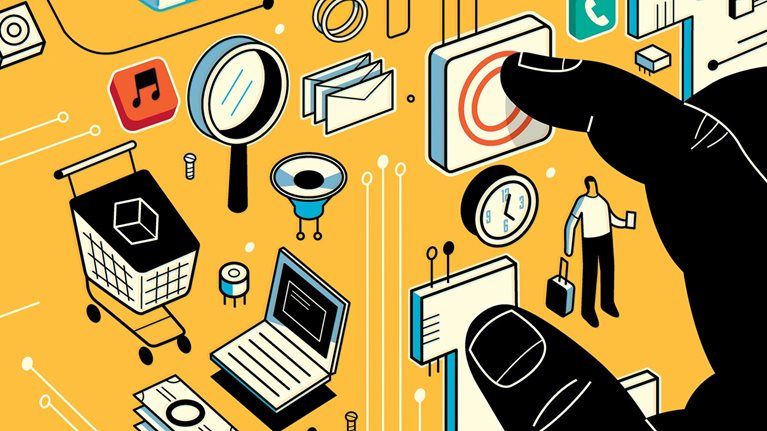It’s hardly news that consumer behavior is changing fast—digital activities are growing rapidly in every sphere.1 Almost half of all video viewing in the United States, for example, takes place in ways that barely existed a generation ago—either time shifted (using digital video recorders or video on demand) or device shifted (onto laptop, tablet, or mobile-phone screens). Music is even more digital: upward of two-thirds of usage involves streaming services, MP3 files, or satellite radio. And mobile-phone usage has overtaken landline voice among every age group.
To benefit from changing consumer behavior, companies cannot rely only on headline numbers and the trends they suggest. Today, the dramatic reversals suffered at the hands of digital media—think of falling newspaper-ad revenues and the sales swoon of compact discs—may seem obvious or easily foreseeable. In reality, understanding and acting on the probable contours of change requires reflection and a deep knowledge of customer behavior, industry dynamics, and feedback loops. These insights can help players reshape their business models to exploit structural changes and cushion potential shocks.
Our experience is that within broad consumer movements, small groups of users (often overlooked in cursory analyses) actually drive the economics. Achieving a more refined understanding of who is doing what requires a thoughtful segmentation—incorporating data about consumers’ demographics, household characteristics, usage patterns, spending, attitudes, and needs—supported by “big data” analytics.
For example, in our iConsumer research,2 we identified four kinds of European mobile-phone users and their usage patterns. Our analysis illuminated that market’s underlying value-creation potential. We called consumers who largely use voice, even with their smartphones, traditionalists in our study. Data practicals use very little voice but lots of data. Data entertainers also use little voice but are heavy users of video, music, and games. Mobile omnivores are superusers of both voice and data services (Exhibit 1). While the omnivores and entertainers collectively represent just 23 percent of the population, they consume more than 85 percent of all data traffic—and pay roughly the same monthly service fees that the other two groups do.
Different mobile-phone user segments behave quite differently.

In work for a digital-publishing client, we found that very occasional visitors to the company’s Web site made up about 80 percent of the audience by the numbers, but less than 10 percent of the total page views for advertisers. Understanding the behavior of the high-intensity 20 percent—for example, their use of competing services—helped the client to introduce a successful tiered-access subscription model while retaining the larger advertising audience (Exhibit 2). The lesson is that to extract value in a rapidly changing space, companies must not only focus on the fraction of users who drive the economics but also simultaneously build a diversity of business models to address the broader audience.
Success may require a diversity of business models, one for high-intensity users and others to address the broader audience.

As for the broader digital consumer, our research examined six shifts. Some are well-known, others less so:
Devices: From PCs to mobile and touch devices. About 60 percent of US households have smartphones, and more than 30 percent of US Internet-equipped households have a tablet as well. The rest of the developed world is not far behind. In personal computing time, the share of mobile phones and tablets has almost doubled since 2008, to 44 percent.
Communications: From voice to data and video. Five years ago, more than 60 percent of phone use was for talking; now that is down to about 20 percent. Today, streaming music, browsing Web sites, playing games, and other data-driven activities account for a majority of smartphone use. The upshot: mobile carriers face challenges in reorienting their business models to focus on data rather than voice.
Content: From bundled to fragmented. Thanks to powerful search tools, content of all kinds (and degrees of obscurity) is widely accessible. Thus, some of the value in traditional “bundles”—such as newspapers, network-TV stations, or big-box retailers—has eroded. Mobile-phone trends illustrate this point well. The average number of apps installed on them has doubled since 2008, to more than 30, but spending is fragmented and growth uncertain.
Social media: From growth to monetization. After a remarkably fast climb to maturity, social networking in developed economies is beginning to see small declines in both its total audience and levels of engagement. At the same time, businesses are trying to use social media as part of their marketing efforts. Achieving measurable returns on them is a continuing challenge.
Video: From programmed to user driven. Traditional “linear” TV represents just 65 percent of all video viewing by US consumers on their television screens and 52 percent across all screens. The increase in the number of video options will pressure traditional advertising-supported business models for distributors, advertisers, and content owners.
Retail: From channel to experience. Despite the tremendous growth of e-commerce, it still accounts for only about 5 percent of all retail sales. As connected mobile devices proliferate, they could transform the shopping experience. Already, about half of all smartphone owners use their devices to conduct retail research. We expect that more consumers will use their smartphones and tablets to complete these transactions as well. The combination of mobile retailing and true multichannel integration will transform the buying experience and begin the era of Retail 3.0.
For more on this research, download the full report, iConsumer: Digital Consumers Altering the Value Chain (PDF–245KB).


